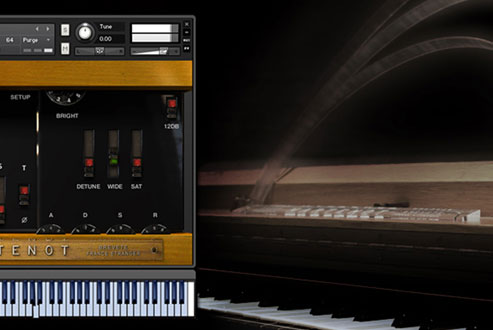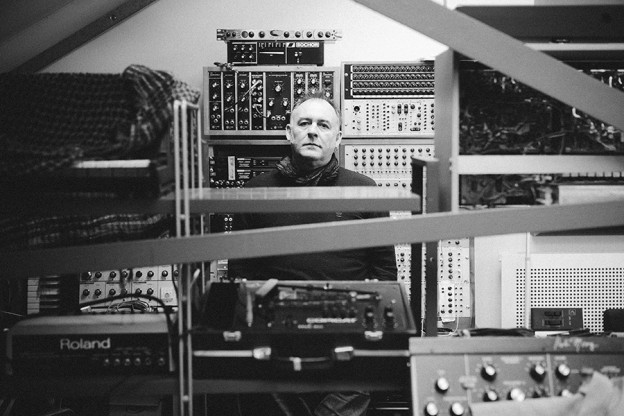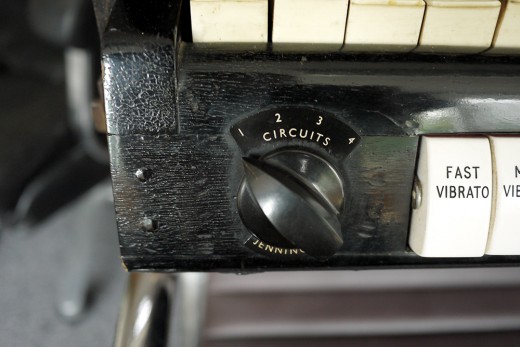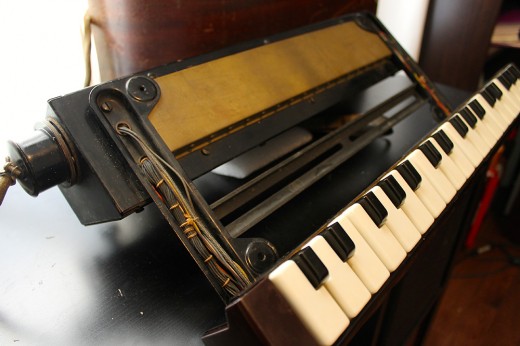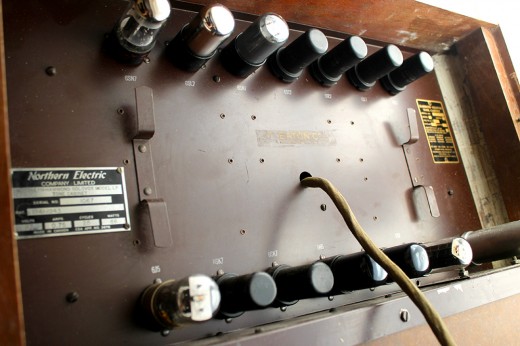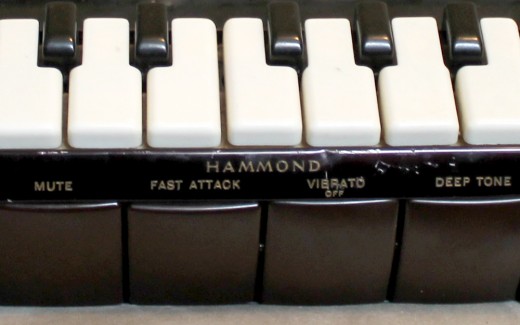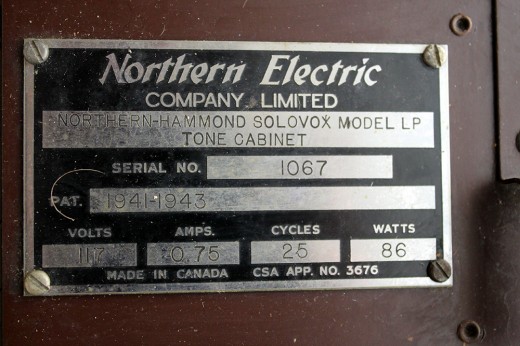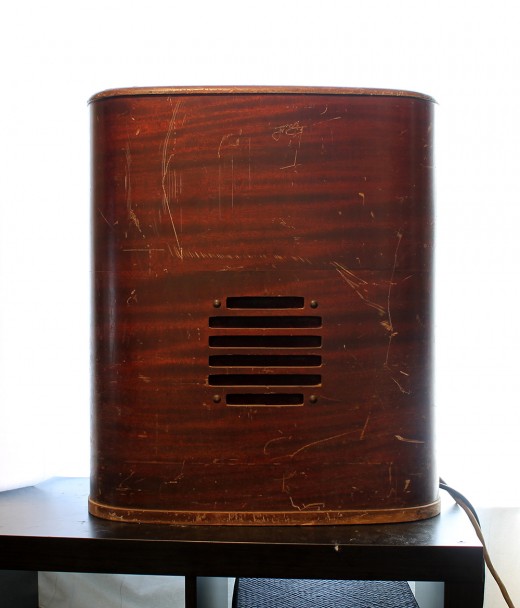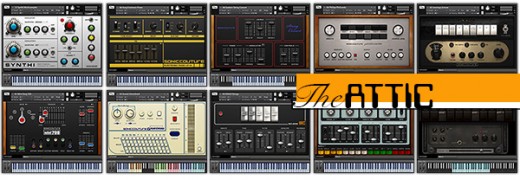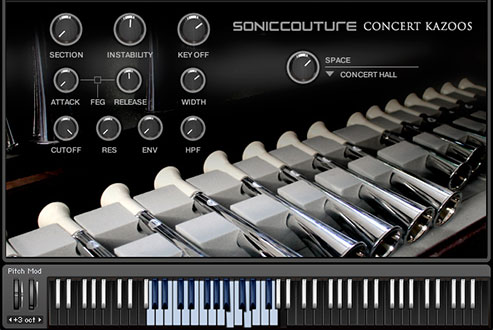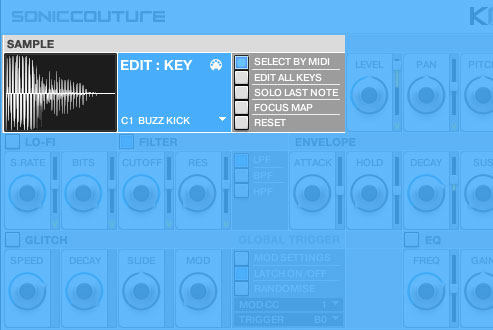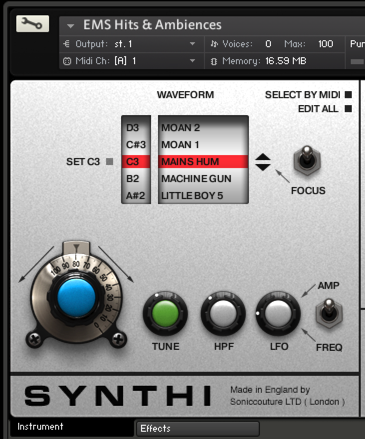Blog Menu
Ondes v2: Sharper Look, Sharper Sound
Ondes v2: Sharper Look, Sharper Sound
By James Thompson | 02.08.2014
Sometimes small improvements can make the biggest difference.
Ondes v2 remains largely unchanged from the original version, one of our most enduringly popular instruments. But look closely and you’ll see that the GUI is much crisper, more solid and clearer on the screen.
And most importantly of all, the sound is now much more authentic; the different oscillator samples are completely phase-locked.
Read MoreSometimes small improvements can make the biggest difference.
Ondes v2 remains largely unchanged from the original version, one of our most enduringly popular instruments. But look closely and you’ll see that the GUI is much crisper, more solid and clearer on the screen.
And most importantly of all, the sound is now much more authentic; the different oscillator samples are completely phase-locked.
What does that mean?
Previously, each waveform sample was layered with the others so that you could blend the oscillator shapes as on the original unit ; this worked pretty well, but resulted in a slightly wobbly, phasey sound – nice and fat, but not exactly like a real Ondes Martenot, which should sound like a single waveform. Phase-locking the samples together fixes this very nicely, taking the Ondes sound to a new level of realism.
FREE UPDATE
We’re pleased to say that Ondes v2 is a free update for all existing Ondes users. To update, it is necessary to download the entire product again from your account downloads page.
Close CloseMeet The Rabid Goats; Univox and Solovox
Meet The Rabid Goats; Univox and Solovox
By James Thompson | 13.04.2014
Of all the instruments featured in The Attic, the Jennings Univox and the Hammond Solovox are by far the oldest and strangest.
Belonging to the same family as the seemingly better known Clavioline, the Univox ( and indeed Solovox), are designed to play what we would refer to today as ‘lead lines’ through an amplified speaker. Each of the units features some kind of real-time control,
Read MoreOf all the instruments featured in The Attic, the Jennings Univox and the Hammond Solovox are by far the oldest and strangest.
Belonging to the same family as the seemingly better known Clavioline, the Univox ( and indeed Solovox), are designed to play what we would refer to today as ‘lead lines’ through an amplified speaker. Each of the units features some kind of real-time control, in the form of a lever that can be controlled by the knee whilst playing the keyboard. In this manner, volume shaping and expression is added.
As I mentioned, it seems as though the three units may be inter-changable from a historical perspective. Although it is commonly held (by Wikipedia, for one), that famous records such as Del Shannon’s Runaway and Joe Meeks Telstar both feature the Clavioline, it is equally possible to find sources online that claim they were performed on the Univox or Solovox (although rarely the latter, it must be said). The fact that the three all look very similar makes it even harder to divine the truth. It seems as though each was simply the local version of a relatively common instrument of the time, that is : Solovox for USA/ Canada, Clavioline for France / Europe, and the Univox in the UK. All were produced from the late 1940s until mid to late 1950s.
Sampling Univox
I personally only have direct experience of the Univox – The Hammond Solovox sampled for The Attic project was sourced and recorded by Dan in Soniccouture Canada (They are reasonably common there, having been manufactured in Canada by the Northern Electric Company under license from Hammond). Working with the Univox confirmed what Adrian had told me – ‘it sounds like a rabid goat’. I had brieflywondered what could have prompted him to such an similie; until i switched it on, that is. It has an incredibly raw oscillator sound, the cabinet giving it its vicious edge, I assume.
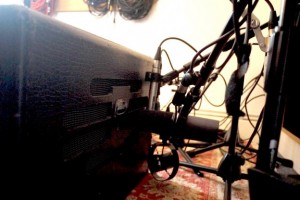 There’s no way of knowing for sure, because there’s no line output. Although Adrian’s Univox was in pretty good working order, it seemed, on closer inspection, that many of the switches did very little, if anything at all, to alter the sound. For this reason, we decided to have the unit serviced, to see how much of it could be brought back to good order. Ben Rossborough, of Vintagesynths.co.uk took on the job, improving the response of many of the switches. The switches largely act as filters more than extra oscillator sources – they modify the timbre of the instrument in a fairly subtle way that seems at odds with the brash, unruly sound that tears out of the speaker. He was unable to add a line output, however – as an all-valve unit, he said that this was too dangerous to attempt – these units pre-dating any electrical safety regulations.
There’s no way of knowing for sure, because there’s no line output. Although Adrian’s Univox was in pretty good working order, it seemed, on closer inspection, that many of the switches did very little, if anything at all, to alter the sound. For this reason, we decided to have the unit serviced, to see how much of it could be brought back to good order. Ben Rossborough, of Vintagesynths.co.uk took on the job, improving the response of many of the switches. The switches largely act as filters more than extra oscillator sources – they modify the timbre of the instrument in a fairly subtle way that seems at odds with the brash, unruly sound that tears out of the speaker. He was unable to add a line output, however – as an all-valve unit, he said that this was too dangerous to attempt – these units pre-dating any electrical safety regulations.
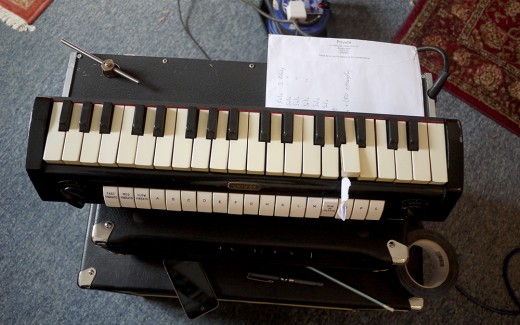 I took the Univox to Lodge Studios, Surrey for sampling – a local studio that has a very nice collection of mics with which to crowd the cabinet. When investigating the refurbished Univox at length in my own studio, it was clear that only 6 switches had any noticeable influence on the sound, so each of these settings were sampled with 3 round-robin passes each; the organic, fluctuating nature of the oscillator feeding into the cabinet warranted some variation in the samples. The vibrato switches would be modelled in Kontakt for more flexibility. During sampling one of the very loose keys completed lost its attachment, and kept triggering when it dropped. This was propped open with a wedge of paper.
I took the Univox to Lodge Studios, Surrey for sampling – a local studio that has a very nice collection of mics with which to crowd the cabinet. When investigating the refurbished Univox at length in my own studio, it was clear that only 6 switches had any noticeable influence on the sound, so each of these settings were sampled with 3 round-robin passes each; the organic, fluctuating nature of the oscillator feeding into the cabinet warranted some variation in the samples. The vibrato switches would be modelled in Kontakt for more flexibility. During sampling one of the very loose keys completed lost its attachment, and kept triggering when it dropped. This was propped open with a wedge of paper.
Hammond Solovox
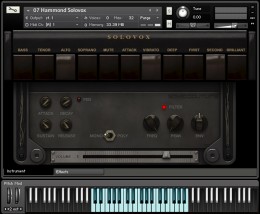 The Solovox was a late addition to The Attic, which was originally going to be 9 instruments, not 10. But deep in the frozen colonial outpost of Canada, Dan was offered a curiosity by the name of a Hammond Solovox. We has been unaware of these instruments, but it soon transpired that it was, as i mentioned earlier in this piece, the transatlantic equivalent of the Jennings Univox that we had already recreated as a kontakt instrument. It seemed too good an opportunity to pass up, since in the true spirit of The Attic, the Solovox could be acquired for only a few hundred dollars.
The Solovox was a late addition to The Attic, which was originally going to be 9 instruments, not 10. But deep in the frozen colonial outpost of Canada, Dan was offered a curiosity by the name of a Hammond Solovox. We has been unaware of these instruments, but it soon transpired that it was, as i mentioned earlier in this piece, the transatlantic equivalent of the Jennings Univox that we had already recreated as a kontakt instrument. It seemed too good an opportunity to pass up, since in the true spirit of The Attic, the Solovox could be acquired for only a few hundred dollars.
The Solovox is much less portable than the Univox – the speaker cabinet is larger, and made of solid wood. A fearsome array of valves (‘tubes’) are exposed on the back panel, as well as some WWII grade wiring.
The Solovox switches seem to vary more in function than on our Univox – here is a rundown of the switches and their functions :
- BASS, TENOR, ALTO, SOPRANO These are the four main oscillators, which are basically the same waveform, but just in different octave registers.
- MUTE Mute emphasizes odd harmonics over even harmonics, changing the timbre a little bit.
- ATTACK Adjusts the speed of the attack, fast or slow.
- VIBRATO Turns on or off vibrato. Vibrato still slightly audible when off.
- DEEP, FIRST, SECOND, and BRILLIANT These are what Hammond calls the formant controls, essentially resonant filters in various bands. When the button is ON that band is enabled.
The Solovox has a much more ‘organ-like’ character than the Univox, the switches functioning more like traditional stops. Within The Attic collection of instruments it provides an interesting halfway point between the synths and the Philicorda transitor organ, with a much more aggressive tone than the latter.
Univox and Solovox are available as part of a collection of 10 analogue instruments for Kontakt Player as part of The Attic collection
Close CloseGo Kazoos.
Go Kazoos.
By James Thompson | 05.04.2014
On April 1st we released Concert Kazoos – a free instrument featuring 25 tuned kazoos/ mouth horns, made by Suzuki.
Was it a joke? Yes and no – we really did release the instrument, and it really was made of recordings of 25 tuned kazoos etc etc. We liked the idea of doing an April Fools release, but at the same time,
Read MoreOn April 1st we released Concert Kazoos – a free instrument featuring 25 tuned kazoos/ mouth horns, made by Suzuki.
Was it a joke? Yes and no – we really did release the instrument, and it really was made of recordings of 25 tuned kazoos etc etc. We liked the idea of doing an April Fools release, but at the same time, we didn’t want it to be an empty trick. So, although the seriousness of the release was played up in a very deadpan way, as though it might be a trick, it wasn’t really. Does that make it a real April Fools? I don’t know, probably not.
What is clear is that the kazoos actually sounded pretty good – and people really seem to appreciate them, more than expected.
If you haven’t downloaded Concert Kazoos yet, you can check them out here ( you just need to sign up for an account first.)
Concert Kazoos & Other Free Downloads
Close Close
Bringing One-shot Sampling Into Focus
Bringing One-shot Sampling Into Focus
By James Thompson | 21.02.2014
In recent Soniccouture instruments you will find a feature called ‘Focus’ – unique to SC, this is an extremely useful way of working with larger collections of related but different single samples; drum sounds in Konkrete 3, field recordings in Geosonics and now hits and one shots in Attic: Synthi AKS (coming soon).
As instruments designers, we had always been niggled by a certain issue: how to present a collection of single samples in a usable way?
Read MoreIn recent Soniccouture instruments you will find a feature called ‘Focus’ – unique to SC, this is an extremely useful way of working with larger collections of related but different single samples; drum sounds in Konkrete 3, field recordings in Geosonics and now hits and one shots in Attic: Synthi AKS (coming soon).
As instruments designers, we had always been niggled by a certain issue: how to present a collection of single samples in a usable way? Historically, developers only really had one choice – to make one patch or instrument for each single sample,with it stretched over the keyrange, centred on C3 ready for playing. This is functional enough for the single sound, but presents the big problem of having to load a new patch to audition the next single sample. In a collection of 200 or 300 (or more) samples this would make the exercise of stepping through looking for inspiration very long-winded, and in many cases, totally off-putting.
I suspect that this had the knock-on negative effect of devaluing sample libraries composed solely of one-shot samples in the minds of the users. People are understandably not so happy to pay much for a more or less unsorted mass of samples, even if they are broken down into folders etc – the end product inevitably lacks cohesion and smooth work-flow.
Which is why I breathed a sigh of relief the day that Dan told me about his ‘Focus’ idea. Suddenly all those product ideas we had previously dismissed because we didn’t like to present endless single-sample patches became viable again.
How The Focus Feature Works
A Soniccouture Focus instrument is a large collection of single samples presented on the MIDI keyboard, mapped to one single key each. So, as you play each key you hear a different sound. Very easy.
If you find a sound you like and want to use, just hit the ‘FOCUS’ button and that sound is automatically mapped across the entire width of the keyboard, tuned chromatically and centred on C3. Just the way you like it (probably). All the other sounds are no longer audible, unless you turn ‘FOCUS’ off again. You can edit all, or just one, of the samples at once.
And that’s it – a simple solution that has really revolutionised how we design products based around single samples. Geosonics, for example, would not be nearly as simple to navigate without it; either the user would have to listen through 10+ minutes of field recording for each patch, or we would have had to present each recording as 50 to 100 different excerpts, in the old-fashioned long list.
You can see a video demonstration of Focus mode in Geosonics in this video, from 1m 40s onwards:
Focus On Drums
In Konkrete 3 its function is subtly different – because the single sounds are already organised and presented as drum kits, Focus operates more as an ‘instrumentizer’ – you can instantly make a melodic, tuned patch out of any single percussion sample, and play a bassline or lead.
A video demonstration of Focus Mode with drums in Konkrete 3
Focus With Synthesis
I’m excited all over again by Focus and its possibilities as we come to the end of working on the somewhat epic Project Attic. A venerable old SC product, Synthi AKS, has had a major refurb and update, and has really been brought to life by Focus technology. Part of the original Synthi product was a collection of one shot effects and hits made by patching the famous ‘pin-matrix’ of modulation routings on the original unit. This is not really suited to multi-sampling or any 21st century ‘deep-sampling’ treatments; it’s just about very cool individual sounds that often only happen once, such is the unpredictability of the E.M.S. machine. Here we were able to gather together the most characterful sounds of the Synthi and put them all into one Kontakt instrument, where they can be played one key at a time as a kind of mad all-in-one Doctor Who patch, or then converted instantly to very playable tuned patches with Focus mode.
Look out for the new Synthi AKS ( in The Attic) coming Q1 2014.
Close Close
Maschine 2 Konkrete Kits Now Available
Maschine 2 Konkrete Kits Now Available
By James Thompson | 09.01.2014
After receiving a lot of requests to produce Maschine 2 preset files for Konkrete 3, Ed, Le Maschinier, has produced the full set. Konkrete 1, 2 and 3 kits preset files are now available to download for Konkrete 3 users.
The update can be downloaded from the your Soniccouture account.
Read MoreAfter receiving a lot of requests to produce Maschine 2 preset files for Konkrete 3, Ed, Le Maschinier, has produced the full set. Konkrete 1, 2 and 3 kits preset files are now available to download for Konkrete 3 users.
The update can be downloaded from the your Soniccouture account.
Close Close